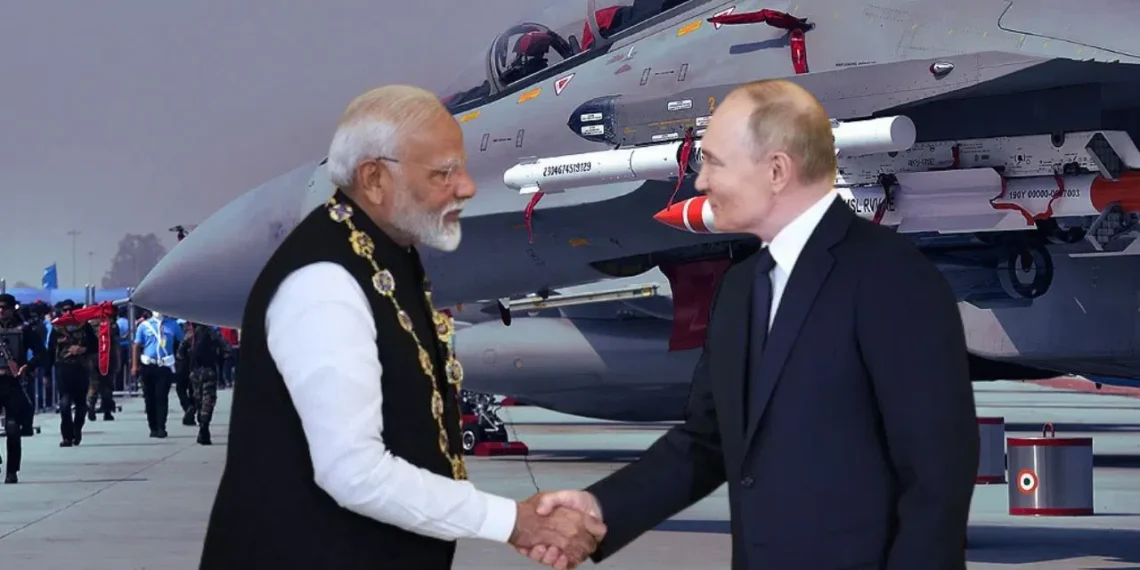Russia has officially confirmed that it is in talks with India to supply additional S-400 Triumf air defense missile systems, strengthening the strategic defense partnership between the two nations. The announcement was made by Dmitry Shugayev, Director of the Federal Service for Military-Technical Cooperation, who emphasized the ongoing nature of discussions and the potential for further cooperation in high-end defense systems.
“As is known, India has our S-400 system,” Dmitry Shugayev, the head of the Federal Service for Military-Technical Cooperation, said, according to the report. “There is an opportunity to expand cooperation in this sector as well. It means new supplies. So far, we are negotiating this.”
India had previously signed a $5.5 billion deal with Russia in 2018 for five units of the S-400 system, three of which have been delivered. The final two are scheduled to be handed over by 2026–2027. These air defense systems, capable of tracking and neutralizing threats at ranges of up to 400 kilometers, have been central to India’s modern air defense network.
The S-400s played an important role in defending India’s air bases and other military installations against Pakistan’s retaliatory strikes during the four-day confrontation between the two neighboring South Asian countries in May. The S-400 reportedly devastated the Pakistan attack capabilities.
“Platforms like the S-400 have given unprecedented strength to the country,” Indian Prime Minister Narendra Modi said in an address to his country’s soldiers in May, a few days after the military conflict concluded. It does not come asa surprise that after its resounding sucess India is now looking to reinforce its defence startegy with a new S-400 deal.
Su-57 Fighter Jet Deal Also in Discussion
In parallel, Moscow is reportedly exploring the sale of Su-57 fifth-generation fighter aircraft to India. Discussions include the possibility of manufacturing the aircraft in India under the government’s ‘Make in India’ initiative. Russian officials are said to be conducting feasibility studies related to investments and technology transfer models that would enable local production, potentially in collaboration with Hindustan Aeronautics Limited (HAL).
Sources indicate that India may be considering acquiring two to three squadrons of the Su-57, while also evaluating the American F-35 as a competing option.
This isn’t the first time the Su-57 has been linked to India. New Delhi was once a part of the joint FGFA (Fifth Generation Fighter Aircraft) project with Russia but withdrew in 2018 due to concerns over cost, stealth performance, and engine technology. However, renewed discussions indicate growing interest in diversifying India’s air power capabilities, especially as regional threats evolve.
Strategic Significance
1. Strengthening Air Defense
The additional S-400 units would further bolster India’s defense against aerial threats from neighboring countries. The system was notably deployed during recent border tensions and played a key role during Operation Sindoor in May, countering missile and drone threats.
2. Deepening Russia–India Ties
Despite Western pressure—particularly from the United States—to scale down defense engagements with Russia following the Ukraine conflict, India has maintained a neutral diplomatic stance and continues to prioritize strategic autonomy in defense procurement.
3. Make in India Push
The potential Su-57 deal aligns with India’s broader goals of building indigenous defense capabilities. If finalized, the deal could include local assembly, licensed production, and significant technology transfer, offering a boost to India’s aerospace sector.
The ongoing negotiations for additional S-400 systems and a possible Su-57 fighter jet deal signal a continued deepening of defense cooperation between India and Russia. As India balances its strategic interests between major global powers, its decisions on these big-ticket defense acquisitions will shape the regional military balance and the future of indigenous defense production.
US Frustrated with India
The U.S. has consistently discouraged India from acquiring additional S‑400 systems, citing strategic and interoperability concerns with Western defense platforms. Under the Countering America’s Adversaries Through Sanctions Act (CAATSA), such transactions could trigger sanctions. However, Washington has not yet made a definitive move on whether to impose them in India’s case.
The U.S. State Department has characterized Russia’s sales of S‑400 systems as highlighting Moscow’s “destabilising role” in the region. A senior U.S. military commander referred to India’s acquisition of the S‑400 as “a problem,” underlining growing unease among American defense stakeholders.
In response to India’s continued engagement with Russia—particularly over energy and defense—the U.S. imposed steep 50% tariffs on Indian exports and signaled potential adjustments to defense procurement triggers. This has prompted India to pause talks on several U.S. defense purchases.
Regarding the Su‑57 offer, the U.S. has not issued explicit statements yet; however, prior initiatives—such as offering the F‑35—were met with domestic criticism in India due to high costs and complexities. Meanwhile, Russia’s pitch includes technology transfer and local manufacturing, aligning with India’s ‘Make in India’ goals.
Washington had earlier warned anyone not to take the S-400 pushing for sanctions against nations that do so although those have not been implemented against India, the relationship between the two was a bit different then. Trump has already posted a huge tariff on India and has been angered by Modi, Xi and Putin coming together. This time it would not be a surprise that he will push for sanctions and tariffs against India for not making the big deals with Washington instead.








